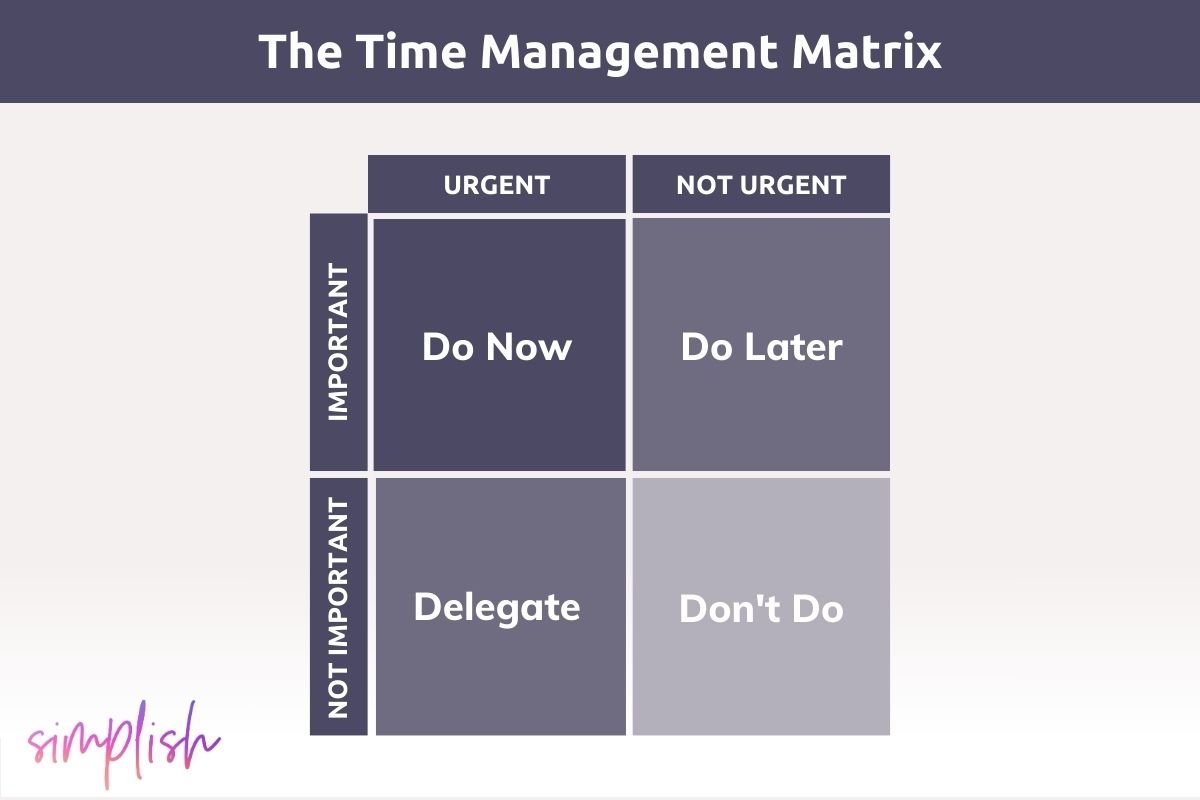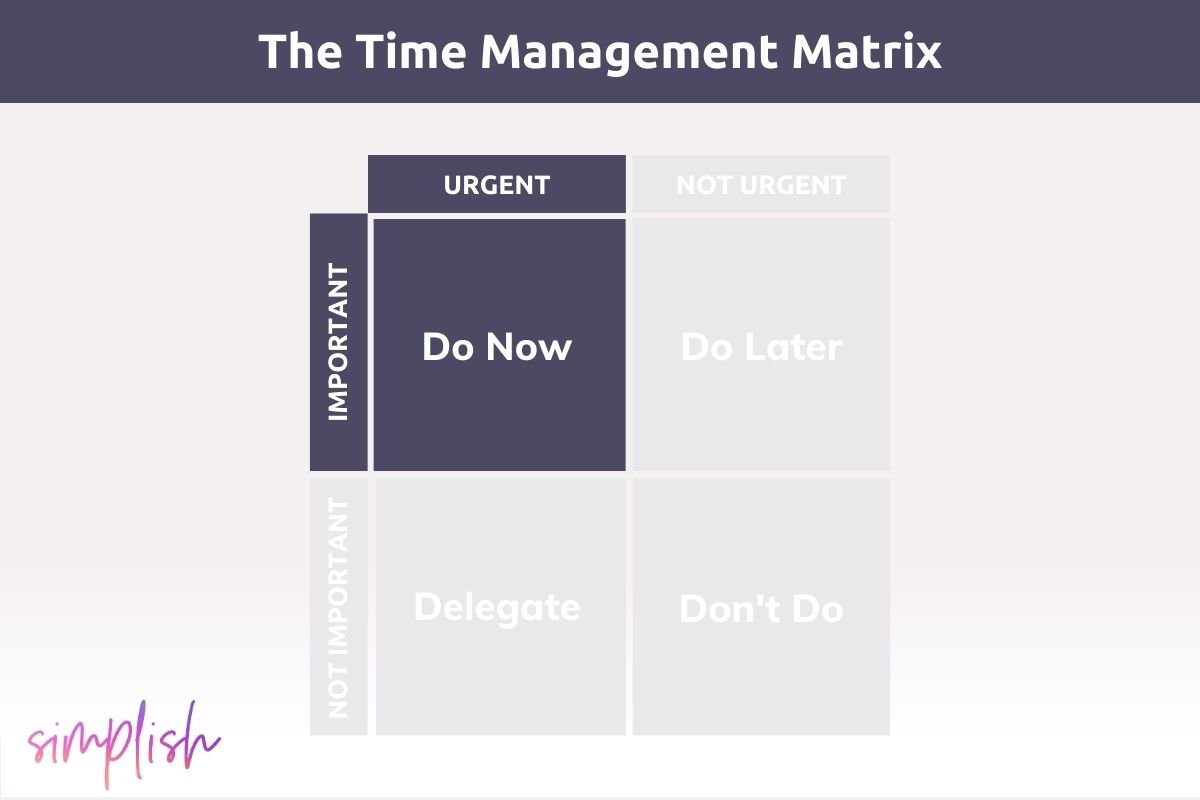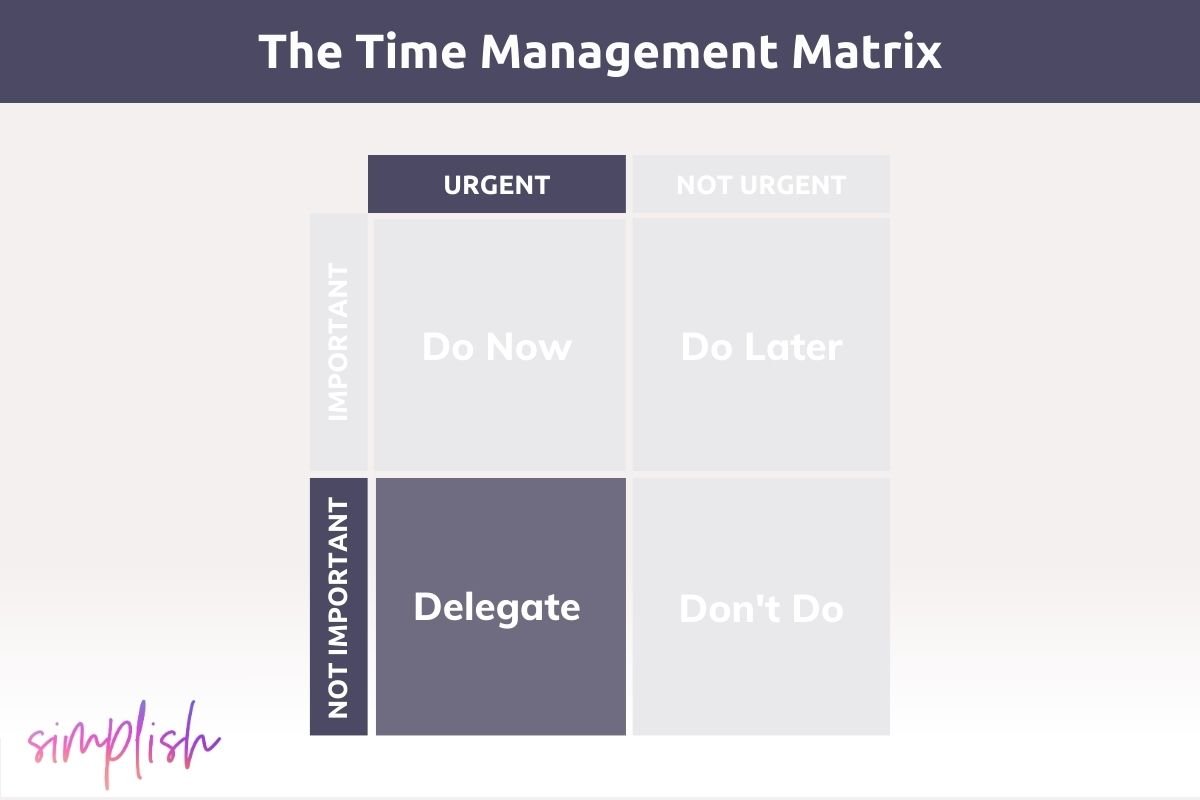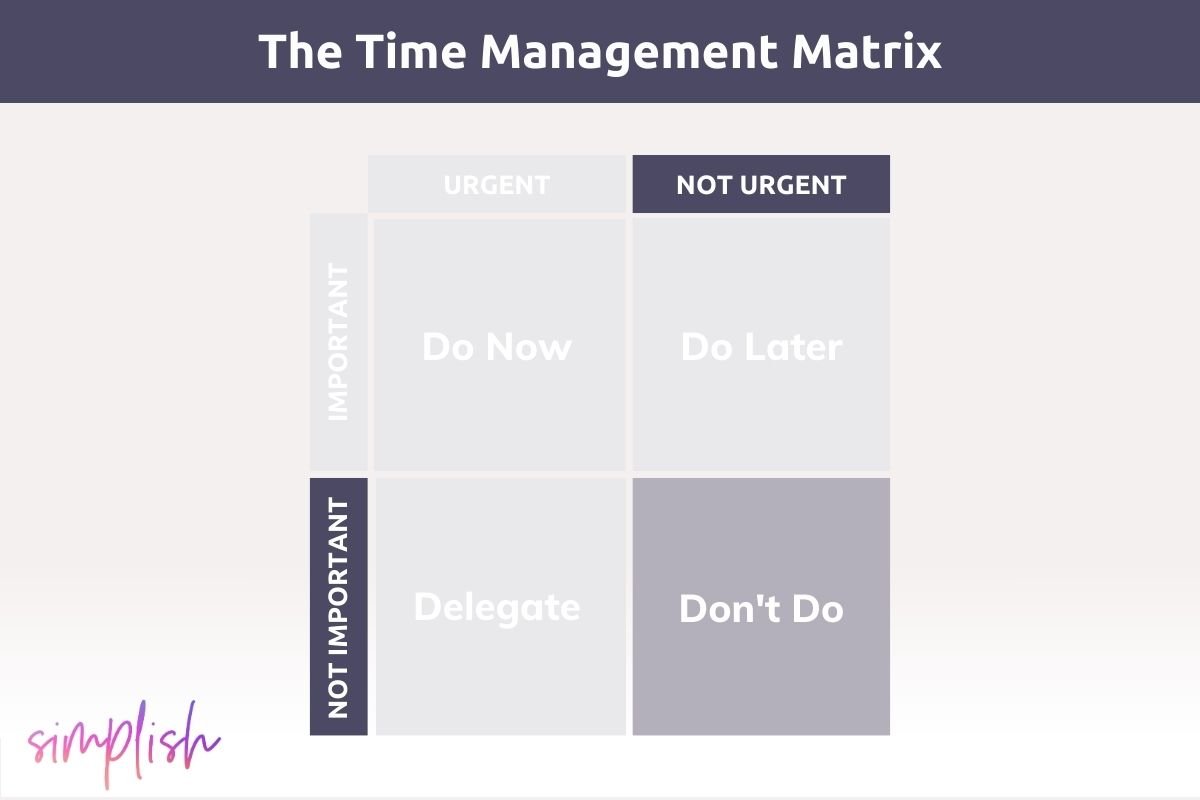Prioritize Your Focus with The Time Management Matrix
If there’s one technique that everyone with a to-do list should know how to use, it’s a time management matrix. Also known as an Eisenhower Decision matrix or Covey matrix, the time management matrix is essentially a prioritization method that can help you break your crazy busy day down into clear objectives, prioritized according to urgency and importance.
Whether you’re battling procrastination, struggling to overcome perfectionism, or fire-fighting your way through the day, organizing your to-dos in a time management matrix will bring immediate clarity to what you’re doing.
The beauty of this easy-to-use planning tool is that it gives you permission to cross things off your to-do list that just don’t matter, while empowering you to do the most pressing tasks in your day NOW.
Keep reading to learn how to use a time management matrix and transform your crazy busy day into clear, doable goals.
What Is A Time Management Matrix?
The time management matrix is a task-management method that can be used with effective time management skills to help you prioritize your tasks by breaking them down into four categories: urgent and important tasks, non-urgent and important tasks, urgent and non-important tasks, and finally, non-urgent and non-important tasks (you might be surprised at how many of these fill your day).
This tool supports strategic decision-making to help you get on top of work-related tasks, but it can also give you an overview of everything you’re doing so you can make more time for activities that don’t get attention when life gets busy.
As it’s widely known and used today, the time management matrix was originally created by former US President Dwight D. Eisenhower, former President of Columbia University, a five star general commanding Allied Forces in Europe during World War II, the Supreme Commander of NATO forces, and, yes, 34th President of the United States from 1853-1961.
It’s safe to say that Eisenhower knew something about making decisions. He was known for saying:
The most urgent decisions are rarely the most important ones.
However, it was only in 1989, that the famous businessman Stephen Covey finessed and popularized Eisenhower’s technique in his book The 7 Habits of Highly Effective People. The added value that Covey gave to this theory is that he realized that the key aspect of this successful formula is to differentiate between "important" and "urgent tasks". From there, Covey built a scheme that can concretely help you to better organize all your tasks, categorize them, and then focus on them according to their importance and urgency.
Boost Purposeful Productivity and Improve Your Mood with Time Management
Here at Simplish, we’re on a mission to overcome the toxic productivity trap and encourage purposeful well-doing free from guilt, endless workdays, and acronym obsessions that overcomplicate your life. From our perspective, the time management matrix isn’t about doing more, it’s about putting your priorities in place.
Anyone who juggles a considerable number of tasks can potentially benefit from this time management matrix. Used with effective time management principles, this tool can improve your ability to handle a heavy workload, relieve the feeling that you’re never getting enough done even after a busy day, and allow you to set time aside in your to-do calender for your personal life.
How to Use the Eisenhower Matrix to Prioritize Tasks
The theory behind the time management matrix is that every activity we normally do can be categorized based both on its urgency and its importance.
To use this tool, it's essential to understand the difference between "importance" and "urgency": you can consider as "important" all those tasks that contribute to the achievement of your goals but which action is not necessarily immediate. You can instead label as "urgent" all those activities that require immediate attention.
For this reason, Covey's matrix as a whole symbolizes your time. The matrix is then divided into four quadrants, in which each task you do is placed based on its urgency and importance.
1. Do Now (Urgent, Important)
As you know, some things are just out of your control and sometimes anything can happen unexpectedly. So in this quadrant, you try to prioritize urgent tasks such as accidents, critical scenarios, crises, 'fire-fighting', and looming deadlines. These things are imperative and as such, they require our immediate action. To sum up, you should put in this quadrant all those activities like:
Crises
Deadline-driven projects
Emergencies
2. Do Later (Important, Not Urgent)
The second quadrant has a lot to do with strategically planning and forecasting your time. This quadrant features activities that don't require immediate action but can have an impact on your future. You should always try to prioritize this quadrant over the others because it represents your quality time, the time when you are concretely, actively working towards the achievement of your goals both for your personal and professional life. Further, you should put in the quadrant II tasks that are related not only to strategic planning but also to physical, and mental health, recreation, and downtime.
Planning
Physical and mental health
Recreation & downtime
3. Delegate (Urgent, Not Important)
The third quadrant is for those activities that seem to be quite pressing but that are not actually important. You should always make sure to put in quadrant III tasks that can potentially get in the way of the achievement of your goals. This quadrant features all those counterproductive tasks like scheduling meetings or replying to unimportant emails that steal a lot of time. In this case, the best thing to do is to simply reach out for a helping hand: you'll see how it can benefit both your working, personal, and obviously even your social life. To sum up, add to this quadrant activities like:
Interruptions
Some meetings
Some emails
You Might Also Like: 10 Guiding Principles For More Systematic Delegation
4. Don’t Do (Not Important, Not Urgent)
Yep, that’s right: There is a whole quadrant in this model dedicated to things that fall under the general category of things that aren’t worth your time.
If you assign a task to this quadrant: DON’T DO IT.
This quadrant includes activities that are neither urgent nor important. You might be surprised by the number of items that land in this category. This includes activities that usually waste your time, but you decide to do them anyways, like using social media on the phone, watching TV, or small talk that holds you back from important activities.
You Might Also Like: 29 Quotes About All Those Things That Just Aren’t Worth It
Add these activities to a list so you know which activities are normally wasting your time. Ideally, you should carve out as little time as possible for this quadrant so that the activities included in this category don't interrupt you when you’re trying to focus on important matters.
Time wasters
Social media use
Self-sabotaging behavior





